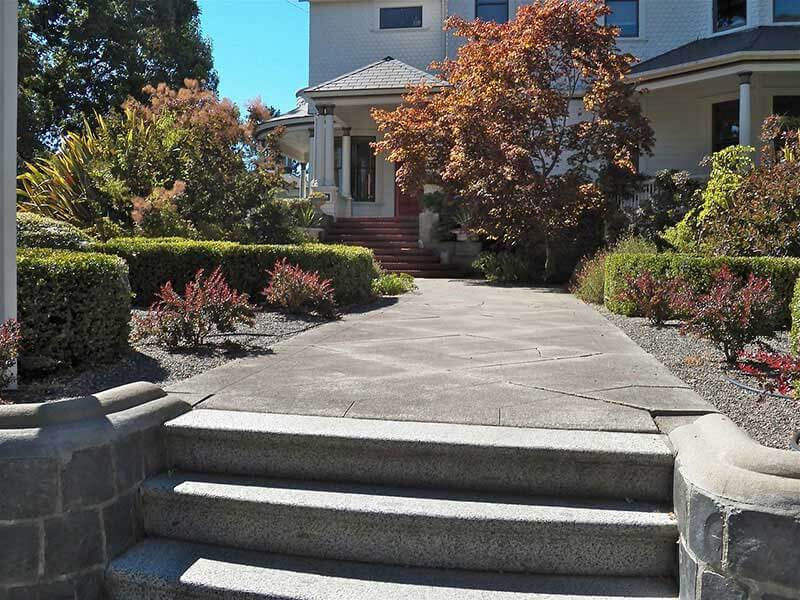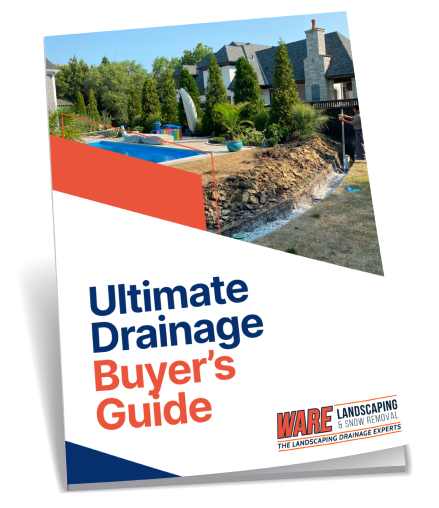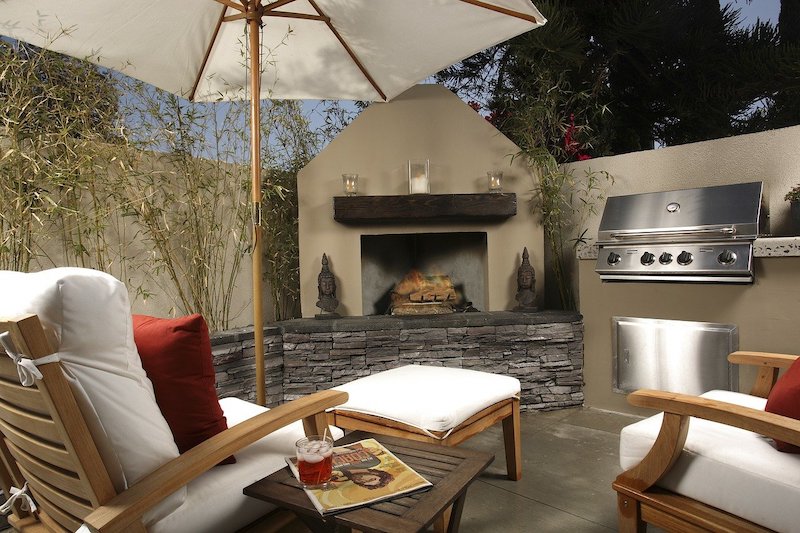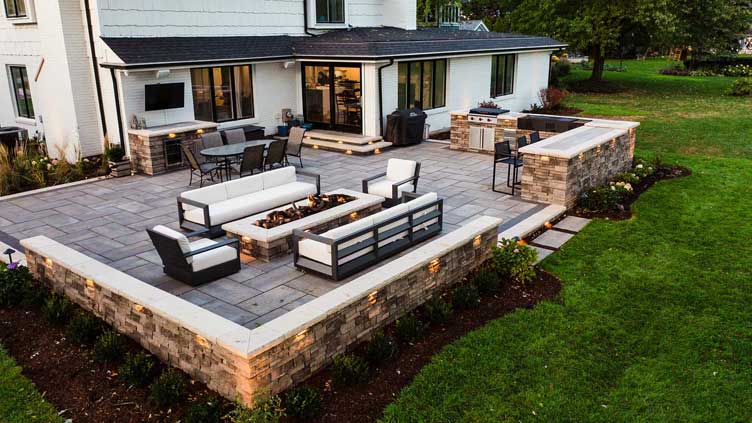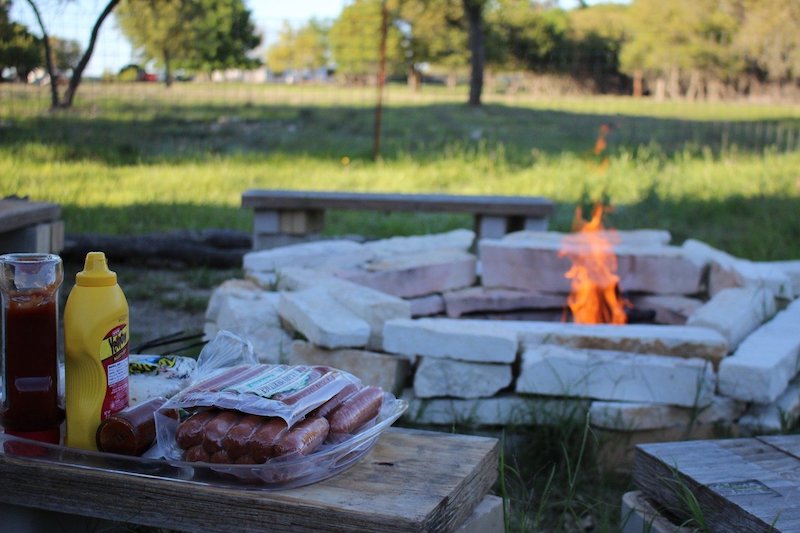Elevate Outdoors: The Allure of Stunning Hardscaping
Hardscaping can do wonders for your home. It adds value and priceless beauty.
It improves. It updates. It Enhances.
Landscaping is essential to create aesthetically pleasing outdoor areas, and when coupled with hardscaping, you’re sure to get the most out of your landscape’s incredible features.
What is Hardscaping?
Hardscaping is a form of landscaping that refers to any manufactured structure and consists of inanimate materials such as gravel, brick, wood, pavers, and stone. Any solid construction outside is considered hardscape.
Some common examples of hardscape include patios, driveways, fences, fire pits, fountains, and walkways. Another form of landscaping is softscaping, which refers mainly to living, organic material such as trees, shrubs, and plant beds.
Different Types of Hardscaping
Hardscaping can consist of a wide variety of products and materials. Here are seven different hardscaping features that can immensely enhance your outdoor space.
1. Decks/Patios
Brick, concrete, or wooden patios and decks are a form of hardscaping that can extend and enhance an outdoor living area. Decks and patios are the perfect way to create entertainment spaces and expand your indoor/outdoor living options.
2. Fire Pits
Beautiful outdoor fire pits made of stone or brick are functional hardscaping that can enhance your backyard and make the space more livable and relaxing all year round. Who wouldn’t want a beautifully constructed fire pit on a crisp fall evening?
3. Stone Pathways
Stone pathways not only add physical appeal to your outdoor space, but they add functionality as well. They are typically made of materials such as stone or concrete pavers. Pathways are a great way to lead to different parts of your backyard without having to walk through the lawn or get your feet dirty.
4. Retaining Walls
A retaining wall is a vital structure made to stabilize a hill, slope, or mound of earth. Retaining walls are also a great way to break up your yard and add physical appeal. Retaining walls allow you to get creative and show off your style. A retaining wall contractor in Downers can help you explore the endless stone options for your retaining wall.
5. Gazebos and Pergolas
Gazebos and pergolas are well-constructed and partially shaded structures that come in numerous sizes, shapes, materials, and styles. They offer shade and shelter ideal for outdoor gatherings, and they also add value due to their beauty.
6. Fountains
Who doesn’t love the calming sound of streaming water? A fountain in your back or front yard can be the perfect way to make a statement and update your landscape. Every backyard needs a focal point, and a beautiful structure like a fountain is the ideal way to turn some heads.
7. Driveways
Your driveway is one of the first things guests see when they pull up to your house. Whether made of concrete, stone, asphalt, or brick, your driveway is a great way to add value and curb appeal to your home. Putting a little bit of money into your driveway can add a lot of value.
Why Choose Hardscaping?
Low Maintenance
Hardscaping is typically low-maintenance. Stone and pavers might get minor wear and tear, such as cracks or chips, but it is easily fixed. Hardscaping materials are extremely durable and require minimal maintenance. They don’t need prepping, fertilizing, trimming, seeding, cutting, mulching, or watering. There are differences between hardscaping and softscaping and you can use them both to build your outdoor dream at home.
Hardscaping materials do need to be cleaned at least annually. They should also be sealed against wear and tear, such as staining and cracking. Sealing will extend the lifespan of the materials.
Adds Value to Your Home
When landscaping your outdoor spaces and adding hardscape features, it’s essential to consider the location of your home and the surrounding homes if you want to sell your home for top dollar someday. If the homes around you have outdoor living spaces, then installing your own will make your home more competitive when it comes time to sell.
A patio or deck adds square footage to your home, thus adding value. Buyers love patios and outdoor living. They love to picture themselves using the spaces. Outdoor areas are often what sells a home.
Allows for Entertainment in the Comfort of Your Own Space
While the pandemic still affects our lives, indoor/outdoor living is more desirable than ever. It allows homeowners to entertain in the comfort of their own homes or outside as desired and play by their own rules. The landscaping industry has been booming as people discover they want to make the most out of the areas they spend the most time in. In fact, you can create even the perfect outdoor kitchen for your yard with the help of professionals.
People enjoy spending time outdoors, soaking up vitamin D, enjoying the fresh air, and having a great oasis within walking distance of their home.
Hardscaping is the cherry on top of landscaping. Hardscapes are fun to design and add immense value to your home and re-sell value. If you’d like to hardscape a fire pit in Naperville or add a beautiful patio, or maybe you have a different hardscape idea in mind, reach out to us, and we’ll work on making your vision come to life.

